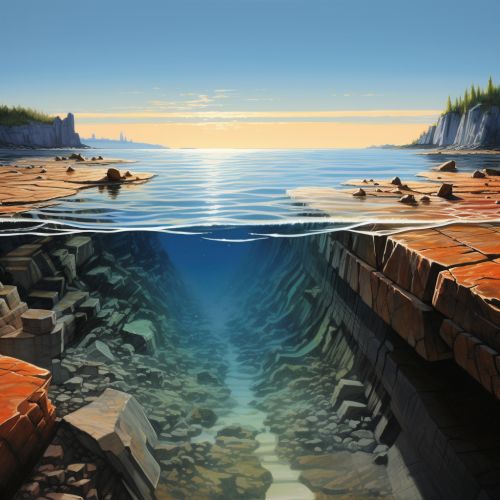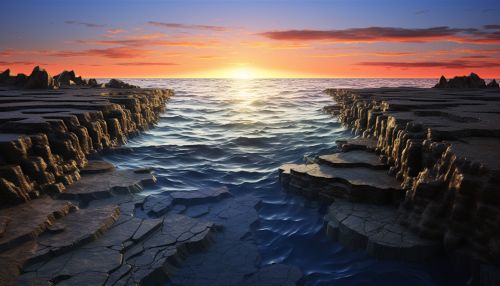Subduction Zone
Introduction
A subduction zone is a region of the Earth's crust where one tectonic plate moves under another, sinking into the Earth's mantle. This geological process, known as subduction, is a fundamental mechanism in plate tectonics and is responsible for many of the Earth's most significant geological features and events, including earthquakes, volcanoes, and the creation of mountain ranges.


Geological Process
Subduction zones are characterized by a process known as subduction, where one tectonic plate, typically an oceanic plate, descends beneath another, usually a continental plate. This process occurs over millions of years and is driven by the gravitational pull of the denser oceanic plate.
Plate Movements
The movement of tectonic plates in subduction zones is a complex process. The descending plate, or subducting plate, moves at a rate of centimeters per year, driven by the force of gravity. The overlying plate, or overriding plate, is forced upwards and may also be pushed aside, leading to significant deformation and the creation of geological features such as mountain ranges and trenches.
Subduction and Mantle
As the subducting plate descends into the mantle, it undergoes significant changes due to increasing pressure and temperature. The plate begins to melt, creating a zone of molten rock, or magma, which can rise to the surface and lead to volcanic activity.
Physical Features
Subduction zones are associated with a range of physical features, including deep-sea trenches, volcanic arcs, and mountain ranges. These features are created by the movement and interaction of the tectonic plates and the geological processes that occur within the subduction zone.
Trenches
One of the most distinctive features of a subduction zone is the presence of a deep-sea trench. These trenches are the deepest parts of the world's oceans and are created by the downward movement of the subducting plate. Notable examples include the Mariana Trench and the Tonga Trench.
Volcanic Arcs
Volcanic arcs are another common feature of subduction zones. These arcs of volcanoes are formed by the upward movement of magma from the melting subducting plate. This magma can break through the Earth's crust, leading to volcanic eruptions. The Ring of Fire, a major area of seismic activity, contains numerous volcanic arcs associated with subduction zones.
Mountain Ranges
Mountain ranges can also be formed in subduction zones, as the overriding plate is forced upwards by the movement of the subducting plate. This process, known as orogeny, can lead to the formation of some of the world's highest mountain ranges, including the Andes and the Himalayas.
Seismic Activity
Subduction zones are one of the most seismically active areas on Earth, with the movement of the tectonic plates leading to frequent earthquakes. These earthquakes can be of significant magnitude and are often associated with tsunamis.
Earthquakes
The movement of the tectonic plates in a subduction zone can lead to significant earthquakes. These earthquakes occur as the subducting plate descends into the mantle, causing the overriding plate to buckle and deform. When this deformation reaches a critical point, it can release a large amount of energy, causing an earthquake.
Tsunamis
Tsunamis are often associated with subduction zone earthquakes. These large ocean waves are caused by the sudden displacement of water by the seafloor during an earthquake. As the wave travels across the ocean, it can cause significant damage when it reaches land.
